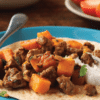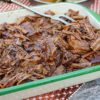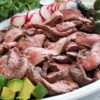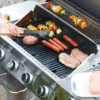Using a Meat Thermometer to Cook Perfect Steaks & Burgers
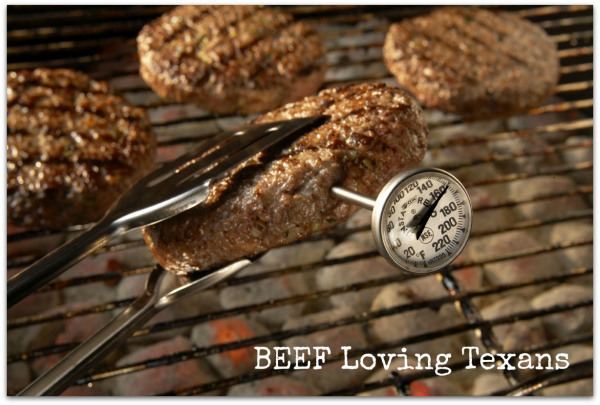
Learning to use a meat thermometer is one of the most profound cooking “AHA” moments I’ve had. Since learning how to use a meat thermometer, my steaks, roasts and burgers have been perfect. And it’s not just for beef – any meat will taste so much better if you take the time while cooking to take its temperature.
Using a meat thermometer is the only reliable way to make sure you are cooking your meat to the right temperature and to make sure it’s cooked enough to destroy harmful bacteria like yucky Salmonella and E. Coli.
It’s important to remember that beef will continue cooking for about 10 minutes after it’s removed from the heat, so rest is key. I like to remove it from heat about 10 degrees before it reaches my favorite temperature. That way all the juices have time to redistribute and the meat doesn’t overcook. Finding your perfect cooking temperature is a little like finding your sleep number. For steak, mine is 137 degrees and after 10 minutes of rest it’s a perfect medium rare – All is right in the world!
Here’s a quick reference temperature table:
Make sure your thermometer is designed for meat and poultry – not for candy or other foods.
Types of Meat Thermometers:
- Oven-proof types go into the food at thebeginning of the cooking time and can be read easily. Most have a dial and thick stem which senses the temperature of food at least 2 inches thick.
- Instant-read types cannot go into the oven, but give you a quick reading when inserted into the food after removal from the oven. These may have a dial or digital readout and are the best option to use when grilling. Most digitals can read accurately when inserted into the food only ½-inch.
How to Use a Meat Thermometer
Insert the thermometer THROUGH THE SIDE of the meat to get an accurate temperature reading. The sensing area of thermometers is ½ inch to 2 inches long, so this area must be completely inserted into the thickest, center area of the food.
- Ground meat and poultry – place in the thickest area of meat loaf; insert sideways in thin items such as patties. Due to the natural nitrate content of certain ingredients often used in meatloaf, such as onions, celery and/or bell peppers, meatloaf may remain pink even when 160°F internal temperature has been reached.
- Red meat, roasts, steaks or chops – insert in the center of the thickest part, away from bone, fat, and gristle.
- Poultry – insert in the inner thigh area near the breast of the bird, but not touching bone.
- Casseroles and egg dishes – insert in the center or thickest area.
Life changing, huh? I thought so too! Using a meat thermometer is easy and it’ll make your steaks, roasts, burgers and all your other food taste like you’re an award-winning chef – like I know you already are.
BEEF Loving Recipes
Caribbean Flank Steak with Coconut Rice
Crumb-crusted Top Sirloin & Roasted Garlic Potatoes with Bourbon Sauce





